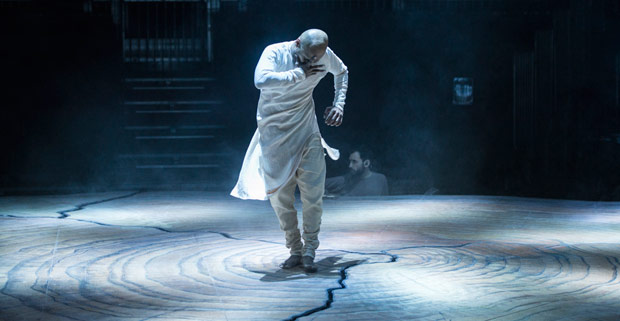
© Foteini Christofilopoulou. (Click image for larger version)
Akram Khan Company
Until the Lions
London, Roundhouse
12 January 2016
Gallery of pictures by Foteini Christofilopoulou
www.akramkhancompany.net
The title of Akram Khan’s latest work is as enigmatic as the hour-long performance – unless you read the programme information beforehand: ‘Until the lions have their own historians, the history of the hunt will always glorify the hunter’, according to an African proverb. Khan has taken on the story of Amba, a minor female character from the Mahabharata, the Sanskrit epic that is well known in Asian cultures but less familiar in Western ones.
Amba becomes a dual role in this retelling, based on Karthika Nair’s poetic account of her fate. Nair, poet and writer of Khan’s DESH, is also the dance producer for Sidi Larbi Cherkaoui’s creations. Her latest book features marginal characters from the Mahabharata –women, outcasts, animals. Amba is a princess abducted on her wedding day by Bheeshma, a prince – Khan’s role. She invokes the gods for revenge and is reborn as a warrior woman in male form, Shikhandi, who brings about Bheeshma’s death and the end of an apocalyptic war.

© Foteini Christofilopoulou. (Click image for larger version)
The two female dancers, Ching-Ying Chien as Amba, and Christine Joy Ritter as Shikhandi, share attributes while remaining distinct characters. Baffled Bheeshma is split between his own motives and emotions and a reproachful effigy of his severed head on a bamboo pole. Details of the complicated tale might be recounted in the sung text (unintelligible to my ears) but the telling of the characters’ experiences is entirely entrusted to the dancers’ bodies. They don’t perform their actions so much as live them anew.
Khan, aged 13, was in Peter Brook’s mighty production of the Mahabharata nearly 30 years ago. (I saw it, and young Akram, in the Tramway shed in Glasgow in 1988.) Though Brook had an incredibly gifted cast of actors, dancers and musicians, the only thing none of them did was dance. Khan takes a different approach, liberating himself and the two women into wordless states of being and feeling, recognisable and mythical.
Set in the round, the performance arena resembles the bole of an ancient tree, with fissures running across its rings. An overhead rig of lights distinguishes an inner circle from an outer one, round which the four musicians perform and Shikhandi prowls, contemplating vengeance.
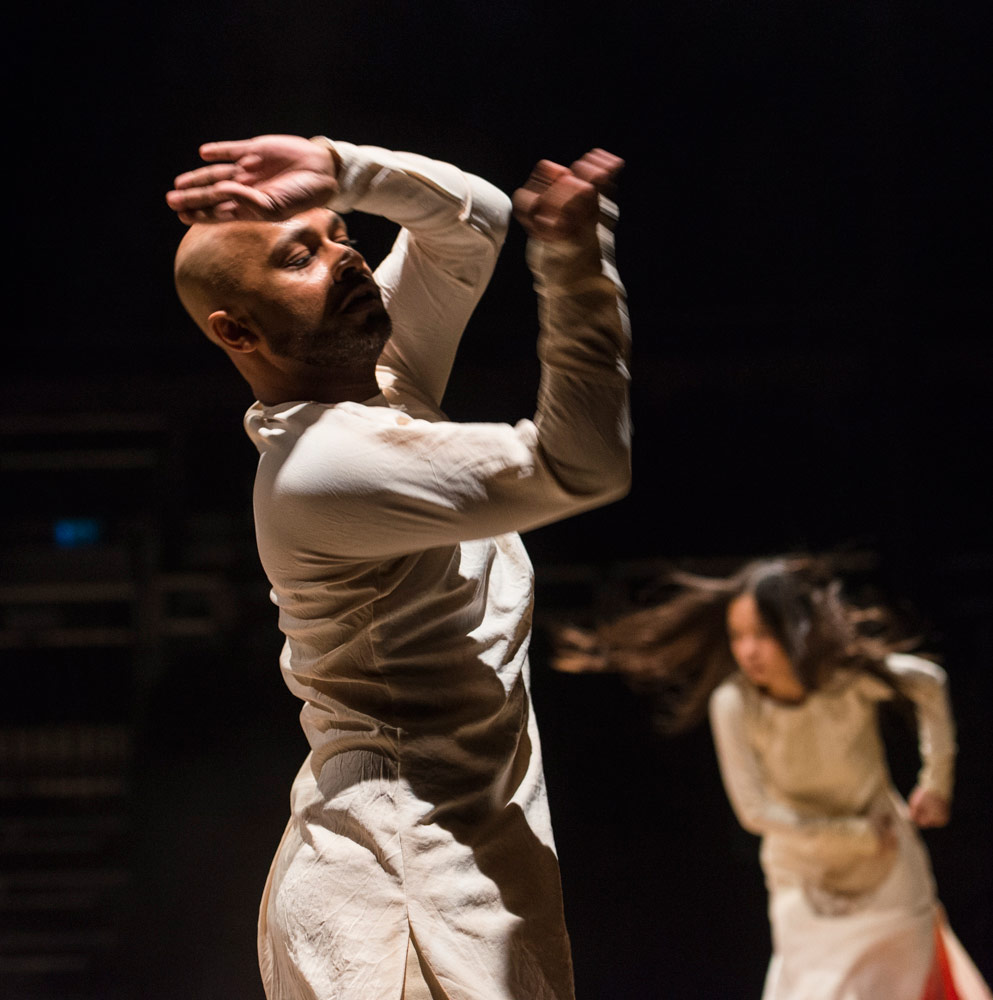
© Foteini Christofilopoulou. (Click image for larger version)
Bheeshma enters with long-haired Amba over his shoulder. At first, Chien as Amba appears delicately feminine until she confronts Bheeshma in distress at her plight. He rejects her pleas to marry her, covering his face with his hand, swearing to remain celibate. In a stylised tussle of seduction, they touch each other’s face, body and feet, eventually linking, against his will, into a single shape with two heads and four limbs. He breaks away into a Kathak frenzy of stamps and spins, ending, aghast, beneath the model of his blackened head on a pole.
Amba, isolated within a circle of white light, undergoes a painful metamorphosis, a Chosen Maiden’s dance of death to thumping percussion from the musicians. Chien galavanises every section of her flexible body, crouching, quivering, hopping while hanging onto her upraised foot as if to pull herself apart. Meanwhile Ritter as Shikhandi scrabbles like a monkey around the perimeter, a feral creature panting to take over.

© Foteini Christofilopoulou. (Click image for larger version)
The two women intertwine limbs, exchanging identities. Ritter articulates her muscular, seemingly boneless limbs even more strangely than Chien did, contorting herself around a bamboo pole as she prepares to fight Bheeshma. He is aware that compared with this gender-shifting warrior, his agitated body is ageing, stiffer and weaker than Shikhandi’s almost masculine athleticism. With a pole gripped between her teeth, Ritter resembles a demon. All three protagonists do battle with bamboo poles until Bheeshma recognises that his dual foe is the woman he wronged. He drops his weapon and accepts death at her hands.
The wooden battleground cracks open along its fissures, leaching fiery light and smoke from the underworld. Cosmic forces are at play in this final confrontation between tortured individuals, playing out age-old resentments in an amoral universe.

© Foteini Christofilopoulou. (Click image for larger version)
Until the Lions is a creation unlike any other – a modern commentary, without words, on a fragment of a three-thousand-year-old epic. As Khan contemplates the effigy of his own head, he must marvel at what he and his collaborators have done. Seen spectacularly in the round in north London, the production is spare enough to tour to other countries and cultures, opening eyes and ears to a new experience of dance as an astonishing form of communication.












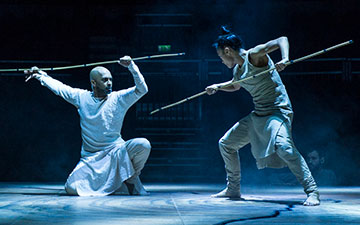


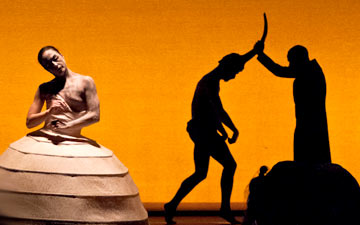
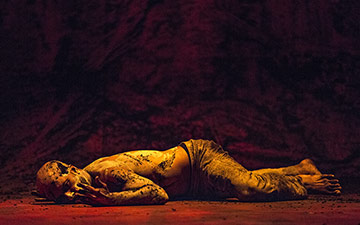
You must be logged in to post a comment.